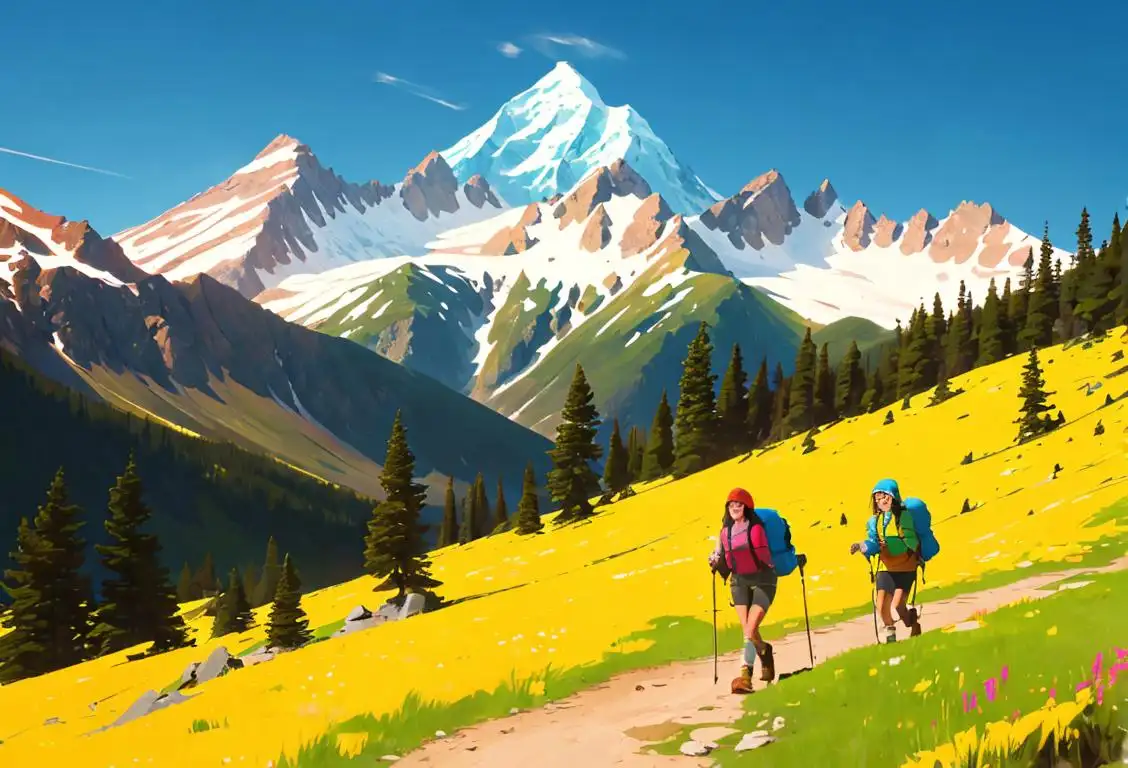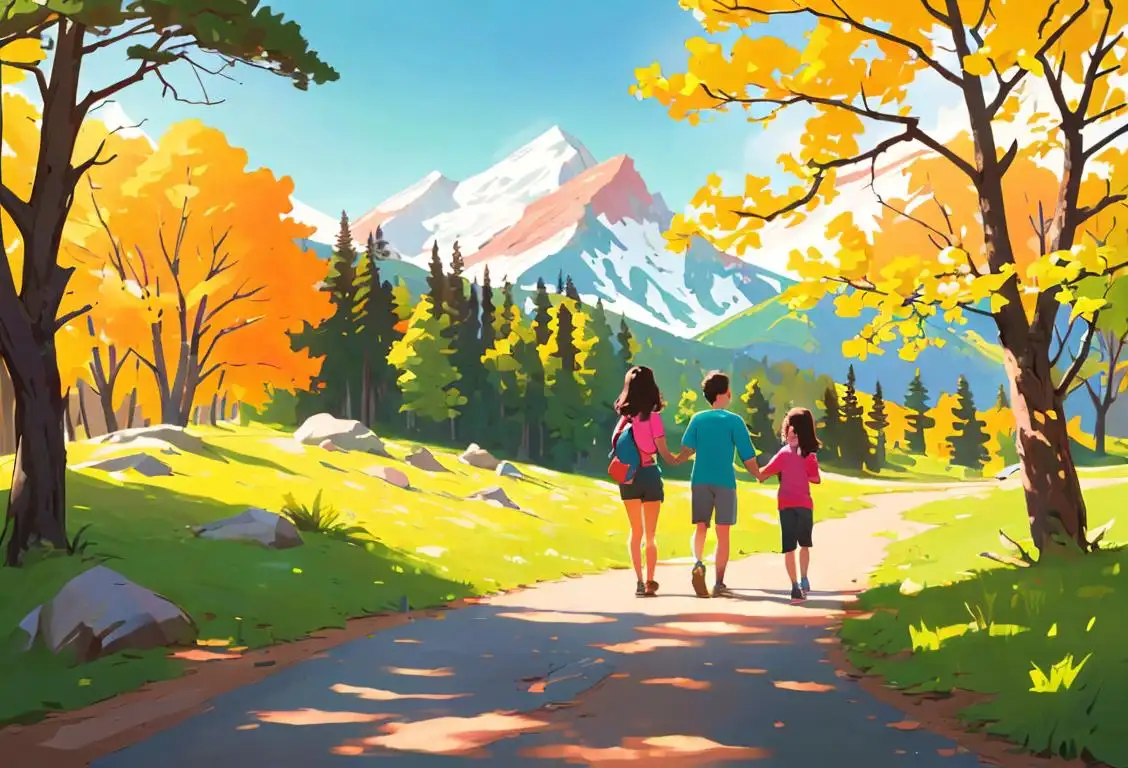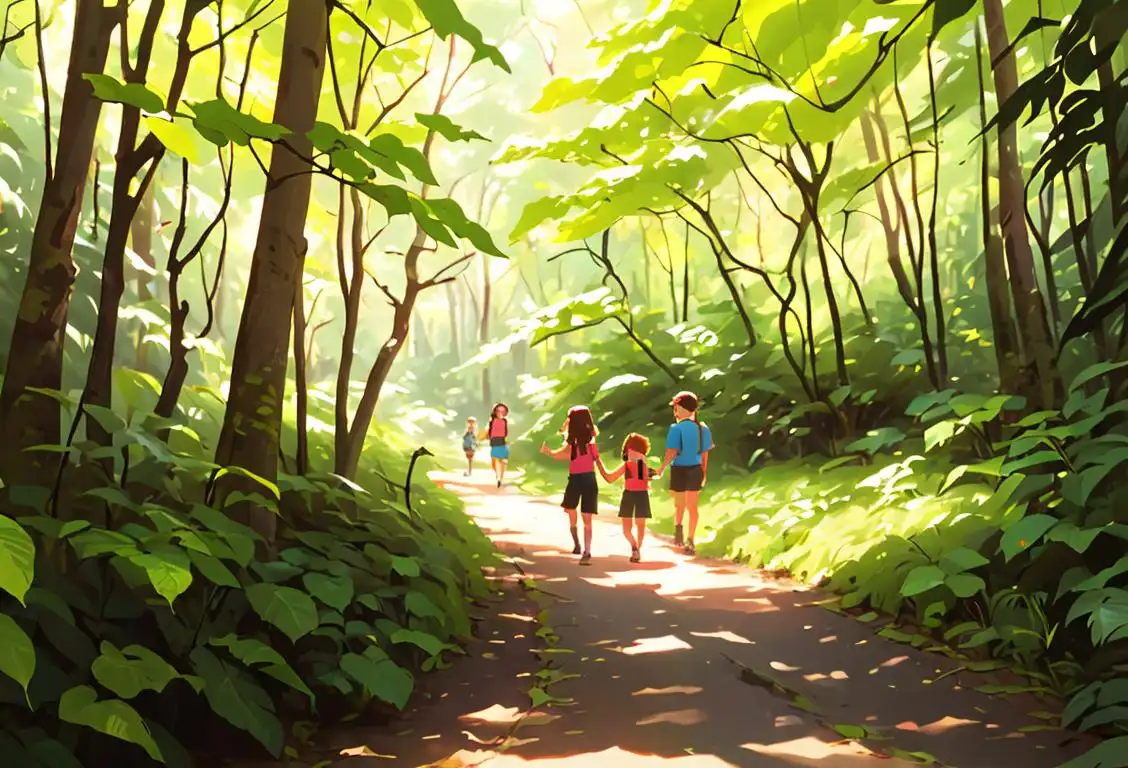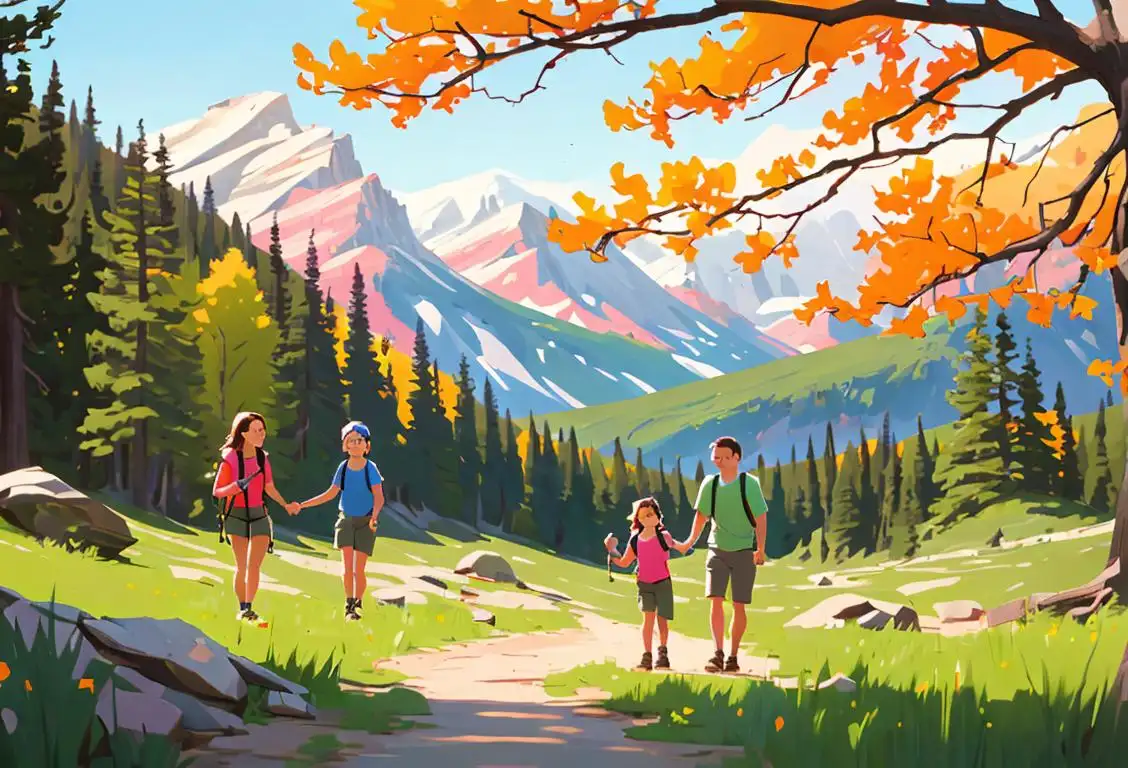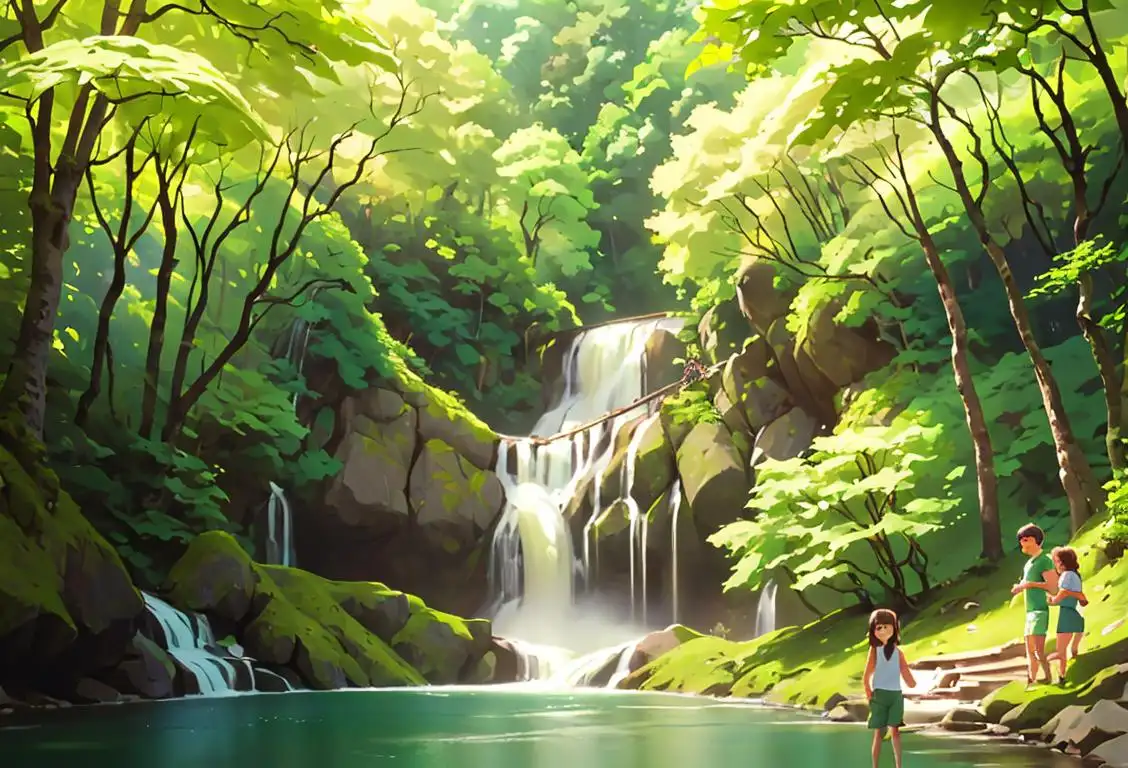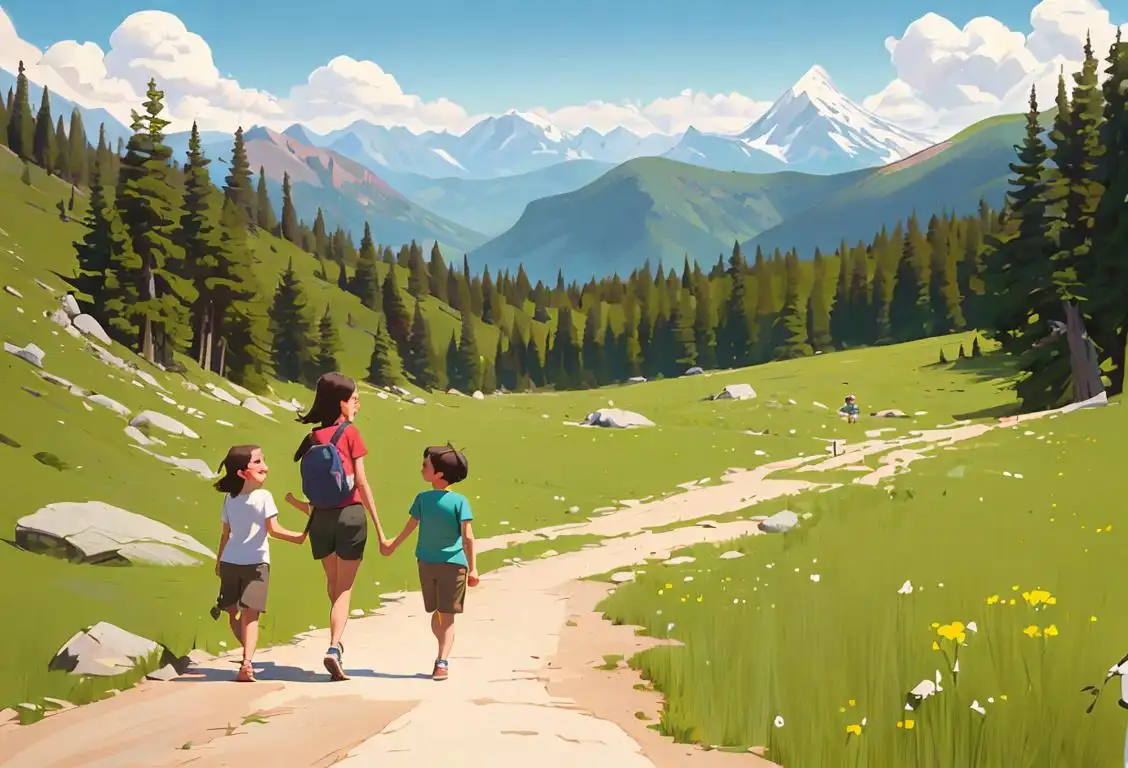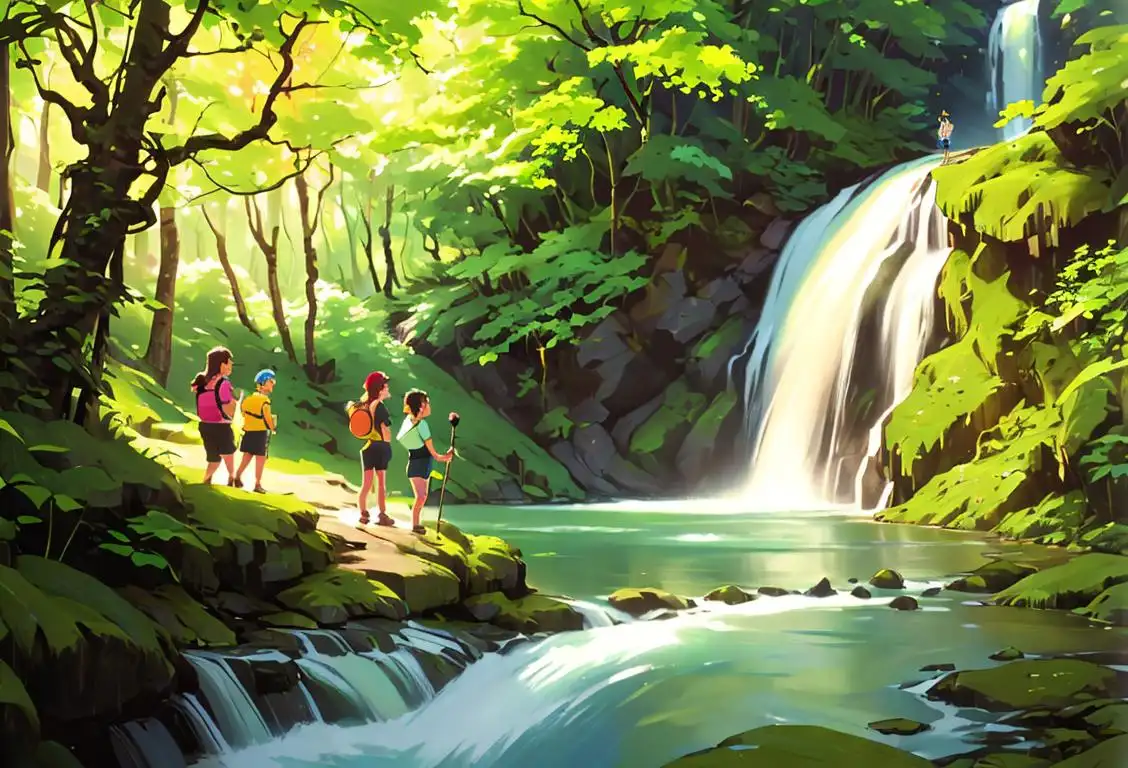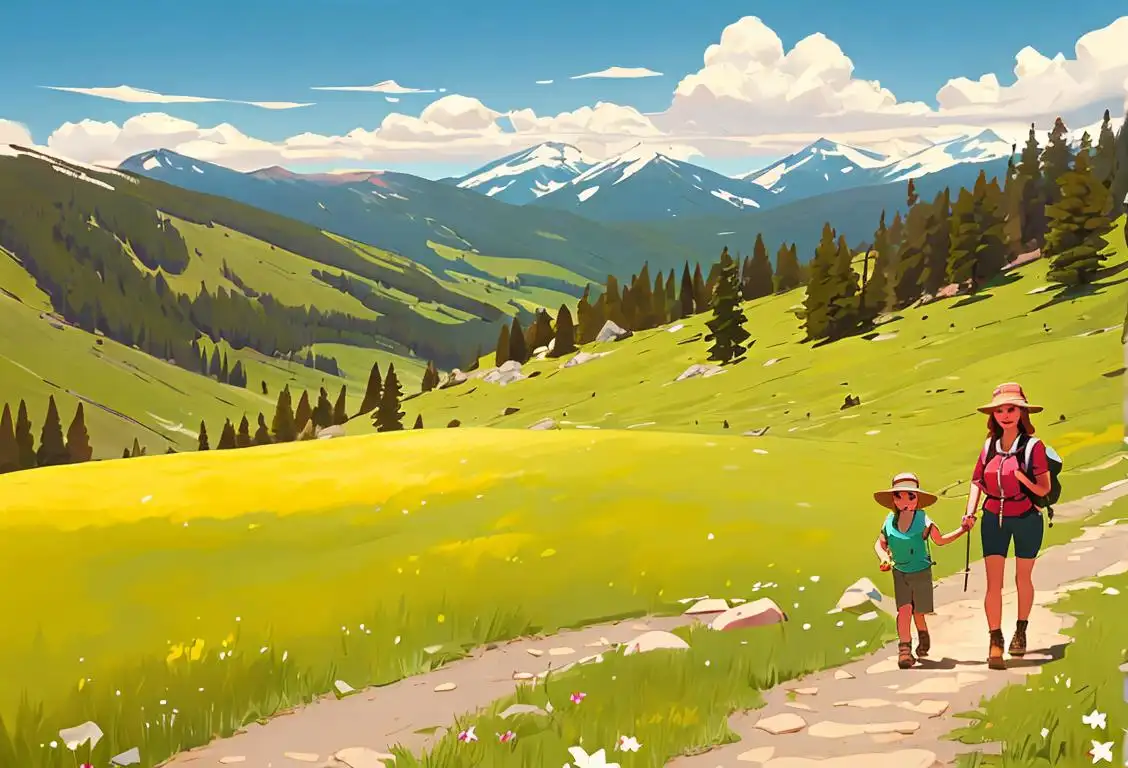National Parks Worth Checking Out On Park Day
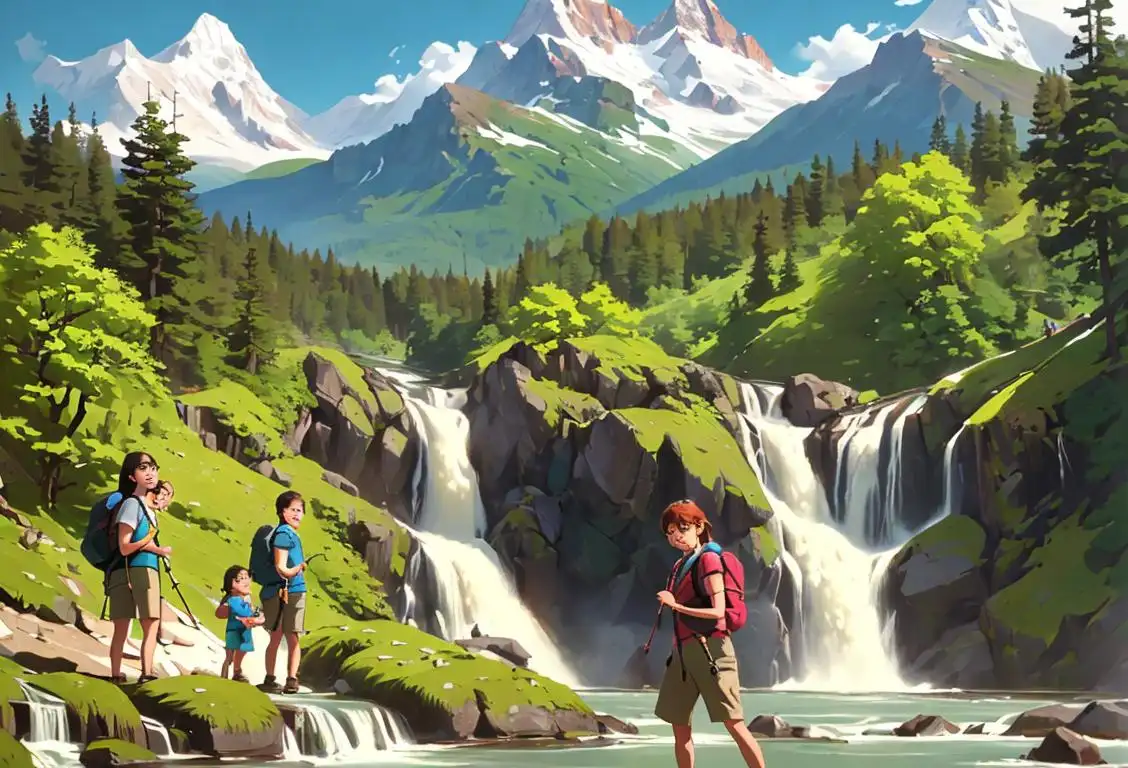
Welcome to Park Day! A day dedicated to appreciating the beauty and wonder of national parks. Whether you're a nature lover, an adventurer, or just someone who enjoys a good picnic, there's something for everyone to enjoy on this special day. So grab your hiking boots and let's explore the incredible national parks worth checking out on Park Day!
When is Parks Worth Checking Out On Park Day?
It's national parks worth checking out on park day on the 23rd July.
The Grand Canyon National Park
When it comes to national parks, the Grand Canyon is the granddaddy of them all. With its awe-inspiring vistas and breathtaking natural formations, it's no wonder this park attracts millions of visitors each year. Whether you choose to hike along the rim, explore the canyon by mule, or take a thrilling helicopter tour, the Grand Canyon will leave you in awe of the Earth's incredible beauty.
Yosemite National Park
Nestled in the Sierra Nevada mountains of California, Yosemite National Park is a true gem. Home to towering granite cliffs, magnificent waterfalls, and ancient sequoia trees, Yosemite offers endless opportunities for adventure and exploration. From camping and hiking to rock climbing and wildlife spotting, this park has it all. Don't forget to snap a photo of the iconic Half Dome!
Yellowstone National Park
If you're a fan of geysers, hot springs, and roaming bison, then Yellowstone National Park is the place to be. Located primarily in Wyoming, this park is not only the first national park in the United States but also the first in the world. Be sure to visit the famous Old Faithful geyser and witness its spectacular eruptions.
Acadia National Park
Situated along the rugged coastline of Maine, Acadia National Park offers a unique combination of rocky shorelines, lush forests, and towering mountains. With over 120 miles of hiking trails, you'll have ample opportunities to explore this picturesque park. And don't forget to catch the sunrise from the summit of Cadillac Mountain, the highest point along the North Atlantic seaboard!
Zion National Park
Prepare to be amazed by the stunning red cliffs, lush canyons, and diverse wildlife of Zion National Park. Located in southern Utah, this park is a paradise for hikers and rock climbers. The famous Zion Narrows, a narrow slot canyon with towering walls, is a must-see for any adventurer.
Sequoia and Kings Canyon National Parks
For those seeking solitude and serenity, Sequoia and Kings Canyon National Parks in California offer a peaceful escape. These parks are home to some of the largest and oldest trees on Earth, the giant sequoias. Marvel at the sheer magnitude of these majestic giants as you explore the park's numerous trails and meadows.
History behind the term 'Parks Worth Checking Out On Park'
1902
The birth of the national park system
In 1902, the United States established the first national park, Yellowstone, paving the way for the creation of an extensive system of protected areas. Recognizing the need to preserve the country's natural wonders, the national park system became a symbol of environmental conservation and a beacon for nature enthusiasts worldwide. This significant step marked the beginning of a new era in park management and preservation.
1864
The Birth of the National Park Idea
In 1864, President Abraham Lincoln signed the Yosemite Grant Act, marking the first time in history that land was set aside by the U.S. federal government for the preservation of natural beauty. This act laid the foundation for the establishment of national parks and paved the way for the concept of parks worth checking out on park.
1857
The birth of the parks movement
In 1857, landscape architect Frederick Law Olmsted and journalist Calvert Vaux won a design competition to create what is now known as Central Park in New York City. This marked the birth of the parks movement in the United States, as it was the first large-scale public park designed for the enjoyment and relaxation of the general public.
1851
The birth of the public park movement
In 1851, the idea of public parks began to take shape with the opening of Birkenhead Park in England. Designed by Sir Joseph Paxton, this park was the first in the world to be funded publicly and made accessible to all social classes. Its success inspired and set the stage for the development of urban parks in the future.
1857
The Emergence of the Park Concept
In 1857, the idea of parks as public green spaces began to take shape. Frederick Law Olmsted and Calvert Vaux, two visionary landscape architects, presented their design for Central Park in New York City. This revolutionary concept aimed to create a natural sanctuary amidst the bustling urban environment. The success of Central Park paved the way for the development of parks across the United States and around the world.
1893
The World's Columbian Exposition
In 1893, the World's Columbian Exposition was held in Chicago to commemorate the 400th anniversary of Christopher Columbus' arrival in the Americas. This fair introduced the concept of showcasing different cultures and countries through elaborate exhibitions and pavilions. It also featured a large park area known as the Midway Plaisance, which inspired the creation of more public parks with diverse attractions.
1864
The establishment of Yosemite National Park
The year 1864 marked a significant step in the preservation of natural landscapes with the establishment of Yosemite National Park. This groundbreaking act by the United States Congress granted protected status to a vast area of breathtaking wilderness. Yosemite became the first national park in the United States, paving the way for the creation of more national parks.
1872
Yellowstone National Park, the First National Park
In 1872, Yellowstone National Park, located primarily in Wyoming but also extending into Montana and Idaho, was established as the first national park in the United States. This iconic park was groundbreaking in its designation, inspiring the creation of other national parks and setting the stage for parks worth checking out on park.
1890
The Birth of the National Parks System
The year 1890 marked a significant milestone in the history of parks with the establishment of the world's first national park, Yellowstone National Park, located in the United States. This landmark event set the precedent for the protection of natural landscapes and the creation of park systems dedicated to preserving their beauty. Yellowstone's unique geothermal features and diverse wildlife captured the public's imagination and sparked a new era of environmental conservation.
1916
The establishment of the National Park Service
In 1916, the National Park Service (NPS) was created to manage and preserve national parks and monuments. The NPS became the central authority responsible for protecting these natural and cultural treasures while ensuring their accessibility to the public. This pivotal moment provided a unified approach to park management and set the stage for the development of parks worth checking out on the national level.
1933
The emergence of parks for recreational use
During the 1930s, the concept of parks shifted from purely preservation to include recreational use. This change was epitomized by President Franklin D. Roosevelt's creation of the Civilian Conservation Corps (CCC) in 1933. The CCC focused on developing parks and forests to provide outdoor recreational opportunities while also tackling environmental conservation projects. This shift expanded the range of activities available to visitors, making parks more attractive destinations for families and adventurers alike.
1906
Establishment of National Parks
In 1906, President Theodore Roosevelt signed the Antiquities Act, allowing the designation of national monuments to protect natural and cultural resources. This led to the establishment of the National Park System, which includes iconic parks such as Yellowstone, Yosemite, and Grand Canyon. The National Park System set the precedent for preserving and maintaining parks worth checking out on park land throughout the country.
1901
Expanding Park Access: Mount Rainier National Park
In 1901, Mount Rainier National Park was established, becoming the fifth national park in the United States. This expansion of the national park system allowed more people to experience the wonders of nature. Mount Rainier's towering peak, glaciers, and vibrant wildflower meadows became a popular destination for hikers and outdoor enthusiasts. The park's accessibility paved the way for a growing appreciation of parks as recreational spaces.
1871
Yellowstone National Park, the world's first national park
In 1871, President Ulysses S. Grant signed the legislation that officially established Yellowstone National Park. Located primarily in the U.S. states of Wyoming, Montana, and Idaho, Yellowstone became the world's first national park. Its unique geothermal features, including the famous Old Faithful geyser, attracted visitors from around the globe and set a precedent for the conservation and enjoyment of natural wonders.
National Park Service Centennial
1916
On August 25, 1916, President Woodrow Wilson signed the Organic Act, creating the National Park Service (NPS). This agency was tasked with managing and preserving the growing number of national parks, monuments, and historic sites. The establishment of the NPS solidified the importance of protecting these natural and cultural treasures, further contributing to the development of parks worth checking out on park.
1948
National Parks System Expansion
The year 1948 marked a significant expansion of the national parks system in the United States. President Harry S. Truman signed the Outdoor Recreation Act, which authorized federal funds for the acquisition and development of public parklands across the country. This expansion created more opportunities for parks worth checking out on park and encouraged the exploration and enjoyment of nature.
1916
The National Park Service is Formed
In 1916, the U.S. Congress created the National Park Service (NPS) to oversee the management and preservation of the growing number of national parks. This revolutionary agency was tasked with ensuring these protected areas remained intact for future generations. The NPS continues to play a vital role in maintaining the country's parks and educating visitors about their natural and cultural significance.
1962
Urban Park Movement
In 1962, the Urban Park and Recreation Recovery Act was passed in the United States, providing federal funding for the revitalization of urban parks. This legislation acknowledged the importance of parks in enhancing the quality of life in urban areas and sparked a renewed interest in creating and improving parks worth checking out on park in cities across the nation.
1895
Frederick Law Olmsted's influence on park design
Frederick Law Olmsted, often regarded as the father of landscape architecture, made significant contributions to the design of urban parks. In 1895, Olmsted's final park design, the Emerald Necklace in Boston, Massachusetts, was completed. This interconnected network of parks, parkways, and waterways became a model for park systems in other cities, inspiring the creation of parks worth checking out on park.
1964
The Wilderness Act
In 1964, the Wilderness Act was signed into law, designating protected wilderness areas within national parks. This act aimed to preserve the most pristine and undeveloped landscapes, ensuring their natural features would remain unchanged by human presence. The Wilderness Act further enriched the park experience by offering visitors a chance to explore untouched and unaltered environments. It represented a commitment to the intrinsic value of wilderness and the protection of rare and fragile ecosystems.
1902
The inception of national park week
In 1902, President Theodore Roosevelt established the first national park week to celebrate the value and beauty of America's national parks. This designated week aimed to encourage public exploration of these natural treasures and foster appreciation for their preservation. National park week continues to be celebrated annually, providing an opportunity for people to discover and enjoy parks worth checking out on park.
1995
The advent of digital park information
With the rise of the internet and digital technology, park information became widely accessible to the public. The National Park Service launched its official website in 1995, providing visitors with detailed information about parks, including maps, visitor guides, and updates on events and activities. This digital transformation made it easier for people to plan their trips, discover lesser-known parks, and access resources that enhanced their overall park experience.
2008
Recognition of the Great Parks
In 2008, the National Park Foundation declared that 25 national parks had achieved 'Great Park' status, signifying their exceptional beauty, uniqueness, and contribution to preserving America's natural and cultural heritage. These parks, including the likes of Acadia, Glacier, and Olympic National Parks, offer breathtaking landscapes and a wide range of recreational activities, making them definitely parks worth checking out on park.
1964
Land and Water Conservation Fund Act
In 1964, President Lyndon B. Johnson signed the Land and Water Conservation Fund Act into law. This legislation established a program to provide funds for the acquisition and development of land and water resources for outdoor recreation. The act contributed to the preservation of natural areas and the creation of additional parks worth checking out on park.
1933
The New Deal brings public parks: Civilian Conservation Corps
During the Great Depression, President Franklin D. Roosevelt introduced the New Deal program, which included the formation of the Civilian Conservation Corps (CCC). The CCC employed thousands of young men to work on various park projects, such as building trails, planting trees, and constructing park infrastructure. This initiative not only provided employment opportunities but also contributed to the development and improvement of parks nationwide.
1994
The President's Commission on Americans Outdoors
In 1994, President Bill Clinton created the President's Commission on Americans Outdoors, aiming to develop a vision and action plan for enhancing outdoor recreational opportunities. The commission's report emphasized the importance of connecting people with nature and enhancing access to parks and other natural spaces, further promoting the idea of parks worth checking out on park.
2020
Parks adapting to a changing world
In recent years, parks have adapted to changing societal needs and environmental challenges. From implementing sustainable practices to addressing issues of inclusivity and accessibility, parks have become more than just natural or historical sites. They serve as platforms for education, scientific research, and community engagement. Furthermore, parks have embraced technological advancements, such as augmented reality and interactive exhibits, to provide immersive and informative experiences for visitors of all ages.
1972
World Heritage Convention and Protecting Natural and Cultural Sites
In 1972, the United Nations Educational, Scientific and Cultural Organization (UNESCO) adopted the World Heritage Convention. This international agreement aimed to identify and protect natural and cultural sites of outstanding universal value. Many national parks, such as Yosemite National Park and Serengeti National Park, have been recognized as World Heritage Sites, highlighting their significance to humanity and fostering global cooperation in preserving these extraordinary places.
21st Century
Transforming Parks with Technology
In the 21st century, parks have embraced technological advancements to enhance visitor experiences and conservation efforts. Digital mapping, augmented reality, and online reservation systems have made it easier for people to navigate and enjoy parks. Additionally, technological innovations have enabled researchers to monitor wildlife populations, track environmental changes, and better understand the impact of human activities on park ecosystems. Parks continue to evolve and adapt to the increasingly digital world while staying true to their mission of providing space for recreation, conservation, and education.
Present
Continued Expansion and Promotion
Today, the concept of parks worth checking out on park continues to evolve and gain popularity. National parks, state parks, and other protected areas offer a range of outdoor experiences, from hiking and wildlife viewing to camping and educational programs. Through ongoing expansion, preservation efforts, and promotion, parks worth checking out on park remain a valuable resource for connecting people with nature and fostering a love for the outdoors.
Did you know?
Did you know that the Yellowstone National Park sits on top of a massive supervolcano? Don't worry, it's not due to erupt anytime soon!Tagged
nature adventure outdoorsFirst identified
23rd July 2015Most mentioned on
23rd July 2015Total mentions
8Other days
Mountain Day
Parks Free For Life Day
Parks To Reopen To Day
Parks Will Be Free This Public Lands Day
Park One Day
Pakr On Last Day
Parks For Day
Find A Rainbow Day
Parks Are Offering Free Admission For Anyone Who Visits Day
Parks With A Day
